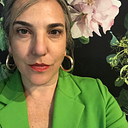Under Trash Mountain, the Konmari Method Checklist.
The title grabbed my attention. Of all the headlines, this one won: ‘Marie Kondo Effect’ Leaves Bay Area Thrift Stores Swamped With Donations” (2).
When I moved out of Oakland in 2017 after living there since 1991 I was unable to donate several items of vintage, antique, and collectible furniture and household items to any of the typical donation centers like Uhuru, Out of the Closet, Salvation Army (three locations), and a few more. Why? because they were full. Why were they full? Because so many people were being evicted. Because so many people were being displaced. Because so many people were leaving the area’s high rents. Also, millennials don’t want all this shit, from us, from their parents, from all the generations prior. I couldn’t give it away.
Fast forward to binge-watching Marie Kondo on Netflix and feeling so seen and so soothed by her joyful take on decluttering. I have knick-knacks but they are all inherited or gifts. I do not buy these things. I have books. I have art, studio supplies, and archives. I own few clothes. But after moving, again and again, what I do have is paper. A baffling amount of it for such a digital age. I understand space, form, color, and little compartments for organizing. My friends have marveled at my tetris abilities that defy the laws of physics by finding places for things, all of the things. I have a strict policy for myself to never have to move a thing to get to a thing. This comes from a low-key trauma to opening cupboards at my grandma’s house and always having Tupperware fall on my head, I think. All this is to say that I am utterly, shamefully, baffled by paper. So when I saw the episode on the lovely young man who nearly wept at his stacks of paper, I felt him. For all my intuitive understanding of how to pare down and place, arrange and organize objects in kitchens, garages, bathrooms, metal shops, and studios paper stacks cause a strange anxiety in me. What I learned from this show was that everyone has a similar area that they struggle with and the reasons are varied and not all that deep, in some cases. What I mean is that what this show does so well is that it doesn’t problematize these areas of struggle. Her method invites you to be compassionate and caring about our unique challenges confronting our disarray and extend that compassion to others. We are challenged to understand our struggle as a way forward to either let these items go or honor their hold over us. And in most cases, to not face them alone. I felt seen. I was inspired. I organized my desk and file cabinets.
What I also knew instinctually is that this TV-ready-home-and-garden thoughtful minimalism is fundamentally at odds with our late-capitalism-consumerist-guilt-ridden-and in my case Methodist-based cultural narratives. Which up until today I thought was Lutheran, so that should tell you how invested in this I am. For Marie, her method can be understood within the context of Shinto, where objects are animated by spirits (1). We, in the West, treat our objects as temporary, on their way to the landfill, or as impossibly sentimental objects that anchor us to identities so altered by life’s events, we can’t find a central narrative of self in all the fractals.
We know the tipping point is here, environmentally, and how our stuff is creating mountains of anxiety around us, personally. And yet, as we all Marie Kondo-ing (yes, it is a verb now) our lives, at the same time, this January, we understand how we are simply shifting this anxiety of stuff to different landscapes, the dump, other countries, the sidewalk. Where will it all go when our houses are minimalist temples to our joy? When we step outside and our streets are filled with homeless people arranging our cast-off furniture against the elements and bulldozers? Where will it all go?
We have shifted our anxiety from a domestic sphere to a logistics nightmare of global scale and ecological disaster. As we saturate local thrift shops, and countries on distant shores refuse our trash, we are left to face our selves at the dawn of the 21c century. Where will it all go? How will answering this question change how we make stuff in the future?
- https://www.huffingtonpost.com/entry/marie-kondo-white-western-audineces_us_5c47859be4b025aa26bde77c
- https://sanfrancisco.cbslocal.com/2019/01/30/marie-kondo-effect-leaves-bay-area-thrift-stores-swamped-with-donations/?fbclid=IwAR3AQpR-7pCbWzYDbye6GT4I9oTY3xz72zZavDAOYLTlo_5K1QANlRkBiyU&utm_campaign=true_anthem&utm_content=5c531b9904d30152cb90b313&utm_medium=facebook&utm_source=social
